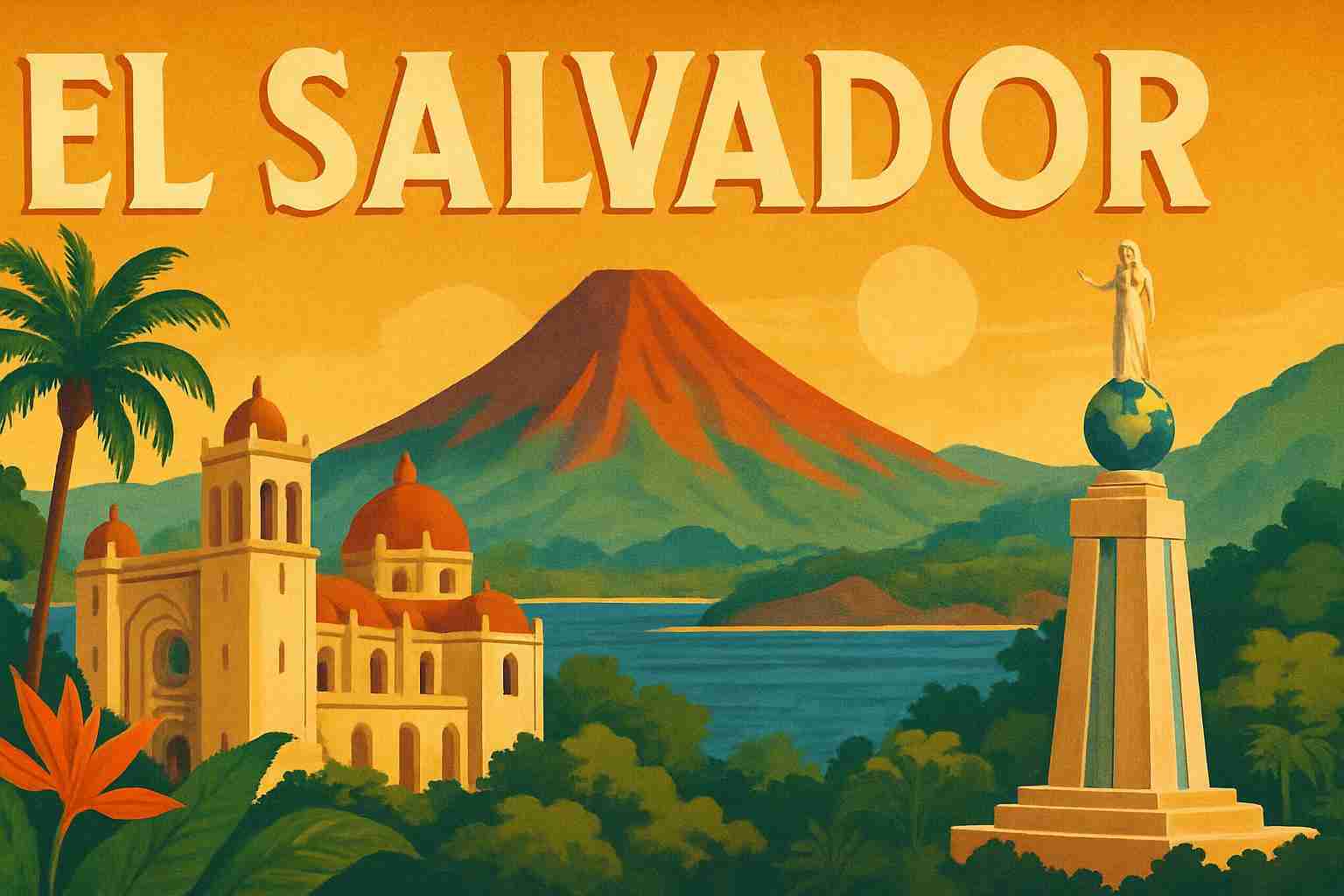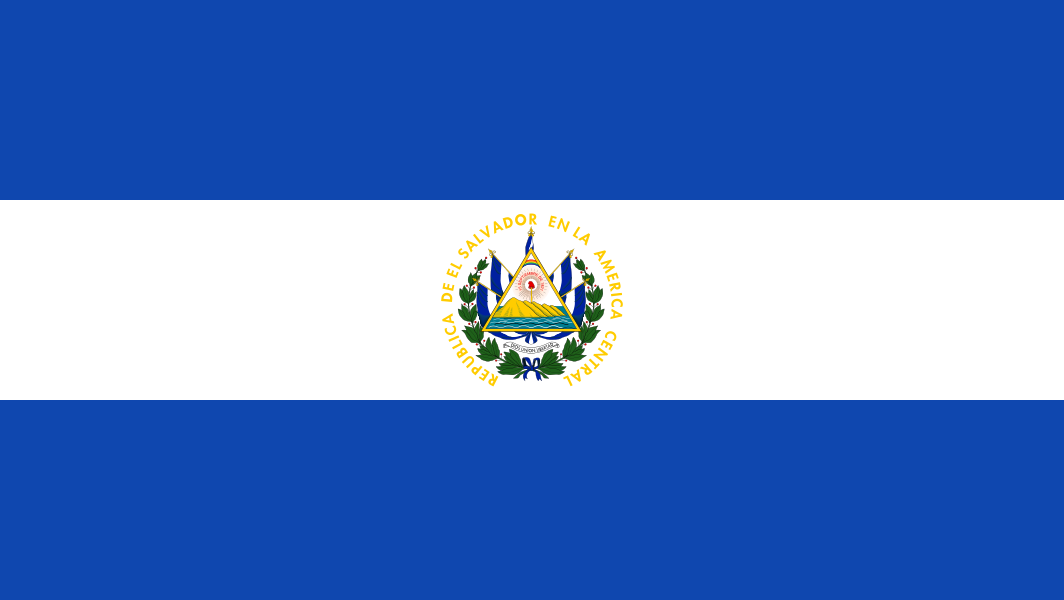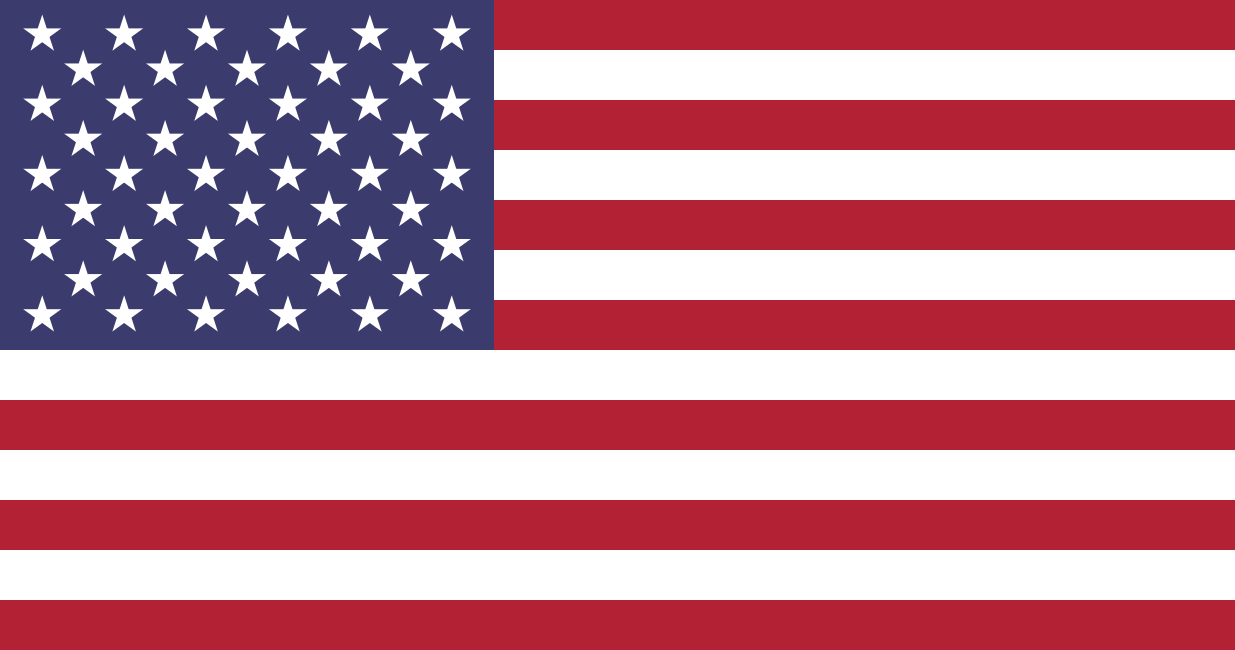Currency in El Salvador: USD Send & Spend FX Guide
 Resources for Expats, Travelers and Entrepreneurs Navigating Life and Trade in El Salvador with the US dollar.
Resources for Expats, Travelers and Entrepreneurs Navigating Life and Trade in El Salvador with the US dollar.

What's in this El Salvador currency guide?
What currency is used in El Salvador?
The official currency of El Salvador (country code: SV) is the US dollar, with symbol $ and currency code USD.
What is a good US dollar exchange rate?
The BestExchangeRates.com currency comparison table below helps you see the total cost of your currency transaction by showing the exchange rates offered by different providers. It also makes it easy to spot potential savings from market-leading FX services compared to bank rates.
To see a full list of rates, enter your transaction type, currencies and amount then click ‘GET RATES’:
Loading rates...
|
|
|
Good things to know about the US dollar
Here are a few things you may want to know about the U.S. dollar:
1. The U.S. dollar is the official currency of the United States and is used for all transactions within the country.
2. It is abbreviated as "USD": The U.S. dollar is abbreviated as "USD," and the symbol for the dollar is "$."
3. It is accepted worldwide: The U.S. dollar is a widely accepted currency and can be used for transactions in many countries around the world.
4. Its value fluctuates: The value of the U.S. dollar can fluctuate based on a variety of economic factors, such as interest rates, inflation, and the strength of the U.S. economy.
5. It is issued by the Federal Reserve: The U.S. dollar is issued by the Federal Reserve, which is responsible for managing the country's monetary policy. The Federal Reserve is a quasi-independent agency that is responsible for setting interest rates and regulating the money supply in the U.S.
The U.S. dollar is the official currency of several countries outside the United States, including:
1. East Timor: The U.S. dollar is the official currency of East Timor, a country located in Southeast Asia.
2. El Salvador: The U.S. dollar is the official currency of El Salvador, a country located in Central America.
3. Zimbabwe: The U.S. dollar is one of the official currencies of Zimbabwe, a country located in Southern Africa.
4. The British Virgin Islands: The U.S. dollar is the official currency of the British Virgin Islands, a group of islands located in the Caribbean Sea.
5. The Marshall Islands: The U.S. dollar is the official currency of the Marshall Islands, a group of islands located in the Pacific Ocean.
6. The Federated States of Micronesia: The U.S. dollar is the official currency of the Federated States of Micronesia, a country located in the Pacific Ocean.
The U.S. dollar banknotes and coins
The physical currency consists of coins and banknotes. The coins come in denominations of 1 cent (¢), 5 cents (nickel), 10 cents (dime), 25 cents (quarter), and 50 cents (half dollar). The banknotes come in denominations of $1, $2, $5, $10, $20, $50, and $100.
The banknotes feature images of famous American historical figures, such as George Washington, Abraham Lincoln, and Benjamin Franklin. The design of the currency is constantly being updated, so the physical appearance of the coins and banknotes may vary slightly over time.
For more USD information check out our selection of US dollar news and guides.
Frequently Asked Questions
What currency should I use in El Salvador?
The domestic currency in El Salvador is the US dollar.
What is the US dollar currency code and symbol?
The three letter currency code for the US dollar is USD — symbol is $.
Which countries use the US dollar?
It is the domestic currency in United States, East Timor, Ecuador, El Salvador, British Virgin Islands, US Virgin Islands, Caribbean Netherlands and Turks and Caicos Islands.
Is the US dollar a closed currency?
No, the US dollar is freely available and convertible. See guide: What is a closed currency?
What are equivalent amounts of CAD and USD?
Here are some popular conversion amounts for CAD to USD (Canadian dollar to US dollar)*.
*Converted at the current CADUSD interbank exchange rate. Calculate actual payout amounts for Send Money and Travel Money exchange rates.

Travel money for El Salvador
Using Wise for US dollar travel money is a smart choice for savvy travelers. With its competitive exchange rates and low fees, Wise allows you to convert and manage multiple currencies effortlessly.
Be careful when using your own bank's Debit/Credit Card, as your bank may also charge an extra 3% as an “Overseas Transaction Charge” plus “Overseas ATM” fees for withdrawing cash on top of the standard Visa/Mastercard 2.5% from market mid-rate.
For card purchases, if you are offered a choice of currencies always select to Pay in US dollar otherwise you will typically get much worst dynamic currency conversion (DCC) exchange rates.
If you really want US dollar cash before departure, you can save money by ordering online. You generally get better rates and can pick up the USD cash locally or even on travel day at the airport.
El Salvador: Travel Guide
Traveling to El Salvador requires careful financial planning to ensure a smooth and cost-effective experience. Here's a comprehensive guide to help you navigate currency considerations and manage your money effectively during your visit.

El Salvador suffers horribly from bad press. While gang violence still dominates international headlines – and keeps so many adventurous travelers at bay – the vast majority of this beautiful country remains untouched by 'the troubles.'
Those visitors who do make the effort are invariably impressed by the warm welcome they receive and by just how much this tiny country has to offer: world-class surfing on empty, dark-sand beaches; coffee plantations clinging to the sides of volcanoes; pretty flower-filled villages with buildings splashed by murals; and sublime national parks. There are few crowds outside the capital, San Salvador, which itself has more swagger than its Central American counterparts.
San Salvador is a great getaway to explore nearby attractions. The city itself is very busy with constant traffic and people rushing somewhere, so you feel like you want to escape the noise. Take the opportunity however and discover San Salvador downtown with many historical buildings, including the National Palace, National Theatre, the Cathedral and the Plaza Libertad.
Currency Exchange tips for El Salvador.
The unit of currency in El Salvador is the U.S. dollar. The country made the switch from its native colón in 2001, and colónes have been phased out since 2004. Small-town tiendas rarely have change for a $20, so get small bills whenever you can. ATMs, known as cajeros automáticos, can be found in all major cities but are hard to come by in rural towns. Even when a smaller town has an ATM, it may not accept your card -- stock up on cash when you can.
Bank machines accept most major card networks, such as Cirrus, PLUS, Visa, and MasterCard. Credit cards are accepted mainly only in the larger hotels, restaurants, and shops. Sometimes, you get lucky in the most unexpected places, but generally, small shops or restaurants in villages are solo efectivo, or cash only. Those that accept credit cards usually take American Express, Diners Club, Visa, and MasterCard.
How to get around in El Salvador?
Flying within El Salvador is neither cost effective nor easily accessible. Some well-heeled execs fly private planes between San Miguel and San Salvador, and Puerta Barillas in Bahía de Jiquilisco has a helicopter pad, but most folk here stay grounded. There are no trains in El Salvador.
Hypercolored American school buses run frequently to points throughout the country and are very cheap (US$0.25 to US$5). Some weekend fares increase by up to 25%. Routes to some eastern destinations have different categories: ordinario, especial and super especial. The last two options cost more, but they are faster and more comfortable. Most intercity bus services begin between 4am and 5am and end between 6pm and 7pm.
Most roads in El Salvador are paved, but traffic is not easy to negotiate and roads are not particularly well signed. Police set up checkpoints, especially on roads to border crossings. Carjacking is a problem, as is getting parts stolen off your parked car. Don’t drive alone in areas of ill repute and always park in safe places. Car insurance is a good idea, but not required. Rental cars are available in San Salvador and San Miguel and can be delivered elsewhere.
Cycling is popular in El Salvador, both as a recreational activity and means of transport. In San Salvador, a good point of contact is cycling enthusiasts Ciclistas Urbanos. They can provide information about the Cicleada Urbana Nocturna, a weekly Thursday-night group-cycling event in the capital. Mountain-biking is possible near Perquín in Morazán – ask at Perkin Lenca or Serafin Tours.
Travel tips for El Salvador.
Santa Ana is El Salvador’s biggest and most active volcano. The volcano climb offers beautiful panoramic views of the neighbouring towns. The highlight of the entire hike is undoubtedly the magnificent turquoise lake sitting in the centre of the crater. Hire a tour guide from the bottom who will take you on a guided 4 hour round trip tour to the crater. Tours usually start at 10-11 am every morning.
This crystal blue crater lake was created over 70 thousand years ago. Most of the shoreline, owned by Salvadorian elite, makes the place peaceful and perfect to relax at. The dramatic beauty of the 6 km wide caldera is undoubtedly worth a visit. You can access the lake by renting a boat or from surrounding it hotels such as the Cardedeu Hotel.

Everyday Costs in in El Salvador
How much does it really cost to live, work, or travel in El Salvador? Here's what to expect for daily expenses and expat living.
Currency Guide: El Salvador (ISO Code: SV)
For travelers planning a week-long mid-range stay in El Salvador, budgeting around $500 to $700 is advisable. This should comfortably cover accommodation, meals, and some local activities. Typical daily expenses in the local currency (USD since El Salvador uses the US Dollar) might look like this: 🍽️ Meal at a local restaurant: $5-10, ☕ Coffee: $2-3, 🚌 Public transport fare: $0.25, 📱 Prepaid SIM card: $5-10, and 🏨 Budget hotel or Airbnb: $20-50 per night. Overall, El Salvador is considered to be a cheap to average destination for travelers compared to the United States, where similar services may cost significantly more. Compared to the UK, El Salvador offers a much more affordable experience, allowing visitors to stretch their budgets further while enjoying vibrant culture and beautiful landscapes.
For expats living in El Salvador, typical monthly living costs can vary widely based on lifestyle, but you might expect to spend between $800 to $1,500 for comfortable living, including rent, utilities, groceries, and leisure activities. When it comes to banking, using local banks often provides better exchange rates and lower fees for withdrawals and transfers compared to international cards. However, it's wise to notify your bank of your travels to avoid any complications. Online transfer services like Wise or OFX can offer competitive rates for sending and receiving money, especially for larger transactions, so they may be more economical than exchanging cash at local currency exchanges or banks—particularly in a country where the US Dollar is already the standard currency.
USD/EUR Market Data
The below interactive chart displays the USD/EUR change and UP📈 DOWN📉 trends over the past 1 Year.

Recent US dollar Market News
December 4, 2025
🇺🇸 Latest Key News & Events Affecting the US Dollar (USD)
📉 USD Softens as Markets Price in Aggressive Fed Rate Cuts (2026 Outlook)
• USD has been drifting lower as traders increase bets that the Federal Reserve will cut rates sooner and faster in 2026.
• Strong market expectations for easing → weaker USD → supportive for risk assets (BTC, equities, commodities).
• Futures markets now imply multiple cuts beginning as early as March–June (depending on inflation prints).
Impact:
A dovish Fed narrows interest-rate differentials → USD loses relative yield advantage → downward pressure on DXY.
⸻
📊 Mixed US Economic Data: Slowing Growth but Still-Resilient Labour Market
Recent data has been sending conflicting signals:
Cooling indicators:
• Manufacturing weakness across several PMIs.
• Consumer spending showing clear deceleration into year-end.
Offsetting strength:
• Unemployment remains historically low, keeping the Fed cautious about cutting too aggressively.
Impact:
Slower growth = weaker USD,
but labour strength limits the downside.
⸻
💵 DXY Pullback From Highs
• The US Dollar Index (DXY) has fallen off its 2024–2025 peaks as markets shift from inflation-fighting expectations to a full easing cycle.
• The USD’s haven demand has also faded as geopolitical tensions cool slightly and equity markets stabilise.
Impact:
Range-bound USD expected until the next major Fed signal.
⸻
🌍 Global FX Context: Other Majors Are Stabilising
• EUR, GBP, and JPY have all shown short-term strength due to:
• expectations that the Fed will cut before the ECB/BoE;
• temporary recovery in risk sentiment;
• Japan signalling slower yield-curve adjustments (slightly supportive for JPY).
Impact:
When major pairs recover, DXY tends to drift lower even if US data isn’t terrible.
⸻
🏦 US Fiscal Concerns Re-Emerging
• Renewed attention on the US fiscal deficit, which remains historically high.
• Treasury issuance is still climbing, though at a smoother pace.
• Some analysts warn this may put long-term downward pressure on the USD as foreign buyers demand higher yields.
Impact:
Not an immediate mover, but a medium-term bearish factor for the dollar.
⸻
📈 Equity Markets vs. USD Relationship
• Stronger equities → weaker USD.
• In recent weeks, the S&P 500 has rallied back into risk-on mode, pulling USD lower as investors rotate out of safe-haven dollar holdings.
Impact:
If markets stay risk-on into January, USD upside remains limited.
⸻
🔍 What to Watch Next
📅 1. Upcoming CPI & PCE Prints
A soft inflation print → faster rate cuts → weaker USD.
A hot print → delays expectations → USD bounce.
🏦 2. Fed Communication (FOMC Minutes + Speeches)
Markets are hypersensitive to hints of when the Fed will cut.
🌎 3. Geopolitical Risks
Any flare-up in the Middle East/Eastern Europe tends to strengthen USD via safe-haven flows.
💰 4. Bond Market Repricing
Rising long-term yields = USD strengthens.
Falling yields = USD weakens.
⸻
TL;DR — Quick Snapshot
• USD is weakening broadly due to expectations of Fed rate cuts.
• Economic data is mixed, with slowing growth but still-strong labour markets.
• Risk-on sentiment and improved global FX conditions are adding downward pressure.
• Medium-term risks include US fiscal issues and bond-market volatility.
For more USD information read our News and guides to the US dollar.
Send Money to El Salvador - Best Rates
To get a good (and fair) exchange rate when sending money to El Salvador you need to find and compare exchange rates for International Money Transfers (IMTs).
The available FX rates for sending money abroad can be very different to the mid-market (wholesale) rate which you see reported online and in the News.
You should especially compare your own bank's exchange rates to those available from Money Transfer specialists to see how much you can save - we make that calculation easy in the below table.
Get a better deal for foreign transfers to El Salvador
When sending money to El Salvador it’s important to compare your bank’s rates & fees with those we have negotiated with our partner money transfer providers. To get a better deal you should follow these 4 simple steps :
- Open an account with a BER reviewed FX provider (id docs may be required)
- You specify the local or US dollar amount you want to transfer
- Make a local currency domestic transfer for the requested amount to the provider's bank account in your country
- Once your funds are received by the provider the converted USD amount will be transfered to the recipient account you specify in El Salvador.
Use the above calculator to compare the exchange rates of FX specialist providers rates versus your bank's standard rates you can hopefully save around 5% and maybe more - end result is more US dollar deposited into the recipient bank account and less margins and fees kept by the banks!
